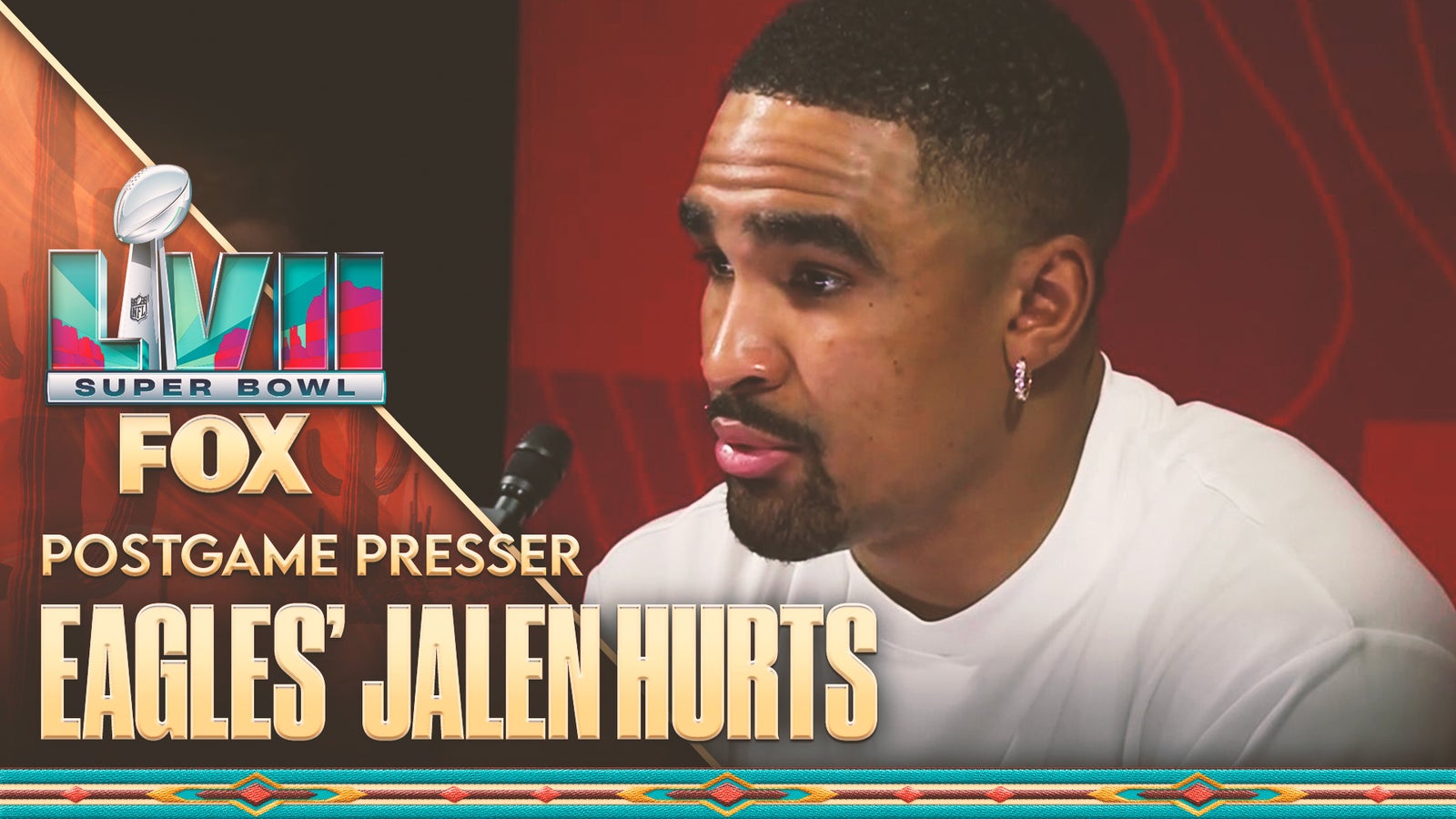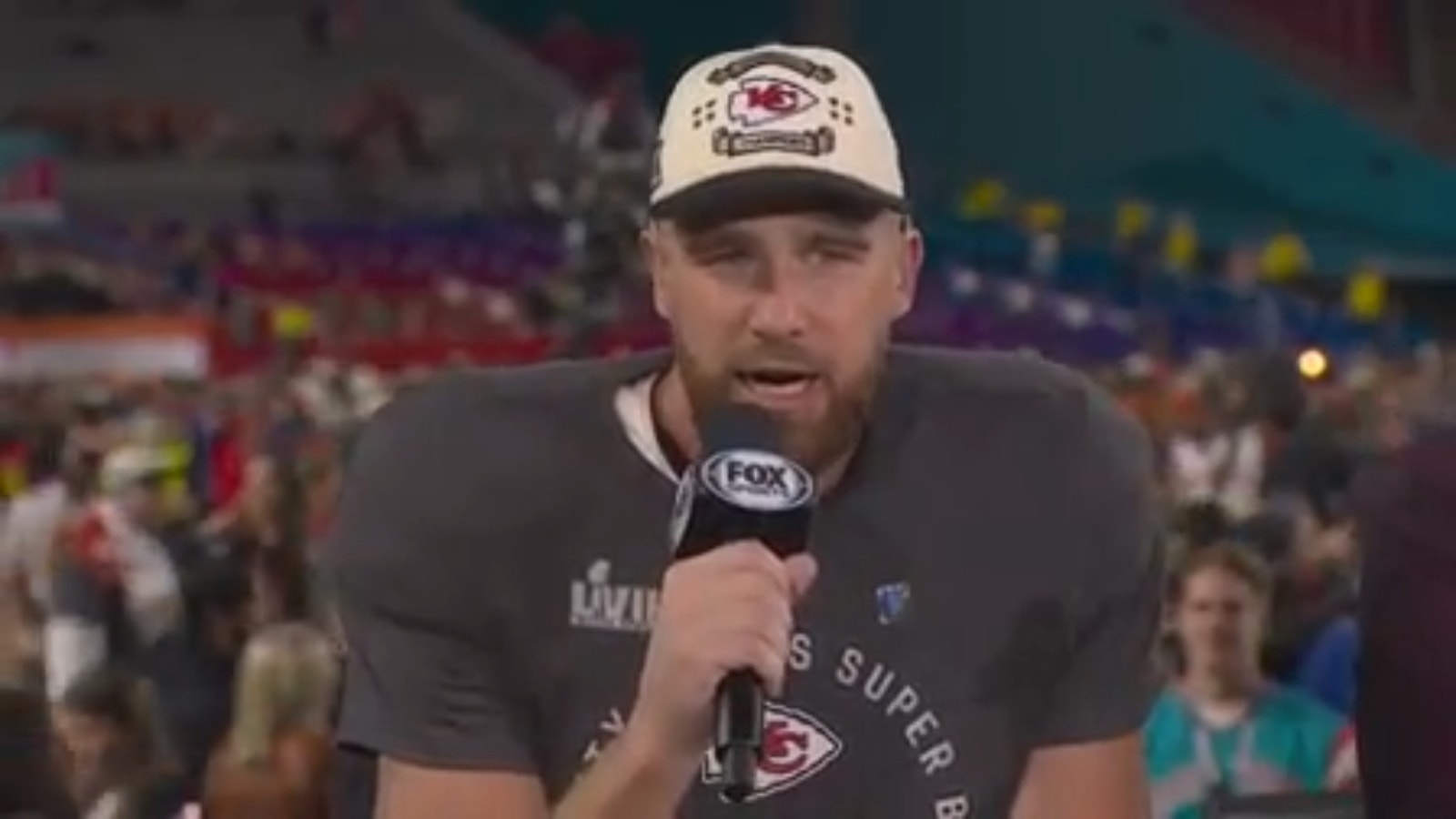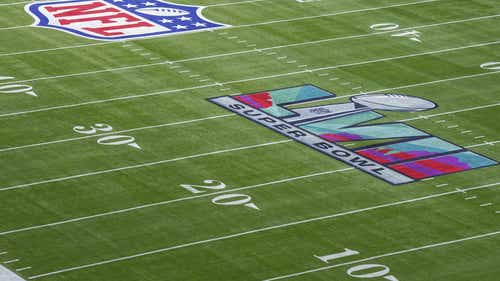
Mahomes, Hurts were awesome, but Chiefs O-line and scheme stole Super Bowl show
The Super Bowl is in the books, and now coaches and scouts will dig through the film to see what lessons can be learned from the best and worst moments of the title game.
After reviewing the game film and making notes, here are my five takeaways from Super Bowl LVII.
1. Andy Reid and Patrick Mahomes are a lethal combination
The Chiefs head coach and quarterback are gold jacket candidates after winning their second Super Bowl together. The duo has dominated the AFC as part of a team that has won two Super Bowls in three appearances while reaching the AFC Championship Game in five consecutive seasons.
Though the duo's early success was partially due to a star-studded cast of playmakers around Mahomes as he settled in as the Chiefs' new QB1 following Alex Smith's departure, the team's success this season with an unheralded group of pass-catchers on the perimeter suggests the coach and his QB can elevate the performances of others through scheming and high-level playmaking.
Super Bowl LVII provided the football world with plenty of examples of the duo going to work to knock off a talented opponent. Reid deserves credit for crafting a game plan that attacked the Eagles with an assortment of screens, runs and quick passes to neutralize a ferocious pass rush that destroyed many Philadelphia opponents this season. The utilization of deception, misdirection and "dink-and-dunk" plays kept the Eagles from playing fast and furious in space. In addition, the side-to-side action from the Chiefs eventually wore the defensive front down as the defenders pursued the ball from numbers to numbers.
Mahomes tested Eagles defense
With Isiah Pacheco and Jerick McKinnon combining for 100-plus yards on the ground, the Chiefs' "small ball" approach encouraged Reid to stick with the plan despite facing an early deficit.
Mahomes brought the X's and O's to life with his disciplined play and superb attention to detail. The fifth-year pro repeatedly worked the underneath areas of the field like a boxer throwing a jab to set up a haymaker. Although he did not get a chance to deliver the knockout on a deep ball thrown over the top of the defense, Mahomes patiently picked apart the Eagles defense with an assortment of in-breaking throws to Travis Kelce and JuJu Smith-Schuster at intermediate range.
The two-time Super Bowl MVP also made a couple of pinpoint tosses to Kadarius Toney and Skyy Moore on a pair of "whip" routes in the tight red zone (inside the five-yard line) on back-to-back drives that showcased his impeccable timing and chemistry with his playmakers.
Given the success that Reid and Mahomes have enjoyed together with and without marquee playmakers on offense, the rest of the AFC should expect the Chiefs to stay at the top of the mountain for a few more seasons.
2. Jalen Hurts is a franchise quarterback
Despite Hurts finishing as the runner-up in the MVP race, the jury was still out on whether he was a legitimate franchise quarterback prior to Super Bowl LVII. After amassing 370-plus yards of offense and three scores in the biggest game of his career, Hurts is unquestionably the Eagles' QB1 of the future.
Whether you like his game or not, as a dual-threat quarterback with a rugged playing style, Hurts has proven over a two-year run that he can lead a team to a Super Bowl while evolving from the game manager to playmaker while directing an offense that is loaded with five-star weapons on the perimeter. Though it is easier to accomplish the feat with a roster that lacks a glaring weakness, Hurts' big-play prowess is the driving force behind the offense's success.
Jalen Hurts' postgame perspective
From his punishing runs on designed quarterback keepers and sneaks to his superb execution of power-read plays and RPOs to his pinpoint passing down the field, Hurts has become an unstoppable force in the backfield with a multidimensional game that keeps defensive coordinators guessing on the sideline.
Against the Chiefs, he showcased his remarkable talents in a spectacular performance that should have silenced the naysayers questioning his ability to play inside or outside of the pocket. Moreover, Hurts' ability to rally the team from a late-game deficit by utilizing his arm and legs to move the chains confirmed his clutch factor as a playmaker on a big stage.
While quarterbacks are ultimately judged on their ability to win, Hurts' impressive showing in a heartbreaking loss should change the narrative surrounding his game heading into the 2023 campaign.
3. The Chiefs O-line steals the show
The Chiefs' frontline quintet of Orlando Brown, Joe Thuney, Creed Humphrey, Trey Smith and Andrew Wylie deserves a standing ovation for its work against the Eagles' vaunted defensive front.
The underappreciated unit bludgeoned the one of the NFL's best defensive fronts while rolling up 158 rushing yards and pitching a shutout in pass protection. The impressive performance was a brilliant display of flawless execution and scheming mixed with a little physicality and nastiness to stymie a D-line that often overwhelmed opponents this season.
Though Mahomes' magic might have masked some of the unit's flaws in pass pro, the Chiefs handled the speed of the Eagles' edge rushers while also sorting out the stunts and twists at the line of scrimmage. The handling of Haason Reddick on speed rushes and games, in particular, was a key part of a game plan that enabled Mahomes to complete 77% of his pass (21-of-27 for 182 yards and three scores) without taking a sack. The unit was aware of the prolific pass-rusher's whereabouts at all times and did not allow him a clear path to the quarterback.
On the ground, the Chiefs moved the Eagles' "bigs" off the ball to create cracks and creases for Pacheco and McKinnon. The duo averaged five-plus yards (5.78) per attempt while adding balance to an offense that operates primarily through the air. Most important, the Chiefs' success running the rock kept the offense on schedule against a defensive front that was built to rush the passer.
With Reid able to utilize a balanced run/pass ratio (26 rushes, 27 pass attempts) due to the O-line's ability to control the trenches, the Chiefs were able to overcome a 10-point halftime deficit with a workmanlike approach that few expected from the perennial title contenders.
4. Too many "DBO" violations cost the Eagles a championship
When I played for the Chiefs in the late-1990s, Marty Schottenheimer routinely told the team, "More games are lost than won" in the NFL. Though the statement was a bit of a head-scratcher at the time, the legendary coach referenced the impact of self-inflicted errors on the outcome of games. The "DBOs" (Don't Beat Ourselves), as they were called, are unforced errors (turnovers, pre-snap penalties, big plays allowed on blown assignments and kicking game errors) that can be avoided with great attention to detail. The infractions are not due to inferior talent but are a series of mental miscues that come back to haunt the team that violates the principles.
The Eagles committed several "DBO" violations against the Chiefs that ultimately cost them their chance to hoist the Lombardi Trophy. Hurts' fumble occurred immediately after a false start penalty by Isaac Seumalo on a third-and-short situation. Without an infraction prior to a likely quarterback sneak, Hurts might not turn the ball over on a quarterback draw. Regardless, the third-year pro cannot put the ball on the ground due to sloppy ball security in traffic.
Nick Bolton's wild scoop-and-score
The Eagles surrendered a pair of touchdowns in the red zone on back-to-back drives due to blown assignments in the defensive backfield. The veteran-laden unit miscommunicated "switch" calls (a pair of defenders will switch assignments based on route distribution from "bunch" or "stack" alignments) and left Toney and Moore wide open on pivot routes that resulted in walk-in scores. The blown assignments were high school-level errors that should not happen to experienced players who have worked against similar combination routes for years. Moreover, the Eagles cannot commit the same errors on back-to-back possessions against the same play.
To make matters worse, the Moore touchdown was set up by a 65-yard punt return due to poor execution from the Eagles' punt coverage unit. From the low, line drive kick that enabled Toney to catch the ball on the run to an undisciplined coverage unit that failed to remain in its assigned lanes with proper leverage on the returner, the Eagles' faulty execution on the play gifted the Chiefs a scoring opportunity in the fourth quarter.
Given the impact of the Eagles' self-inflicted errors, Nick Sirianni & Co. came up short in Super Bowl LVII due to their violation of the "DBO" principles.
5. The "basketball team" adds a dimension to the Chiefs offense
There is a faction of team-builders in the NFL who believe a wide receiver corps should feature a group of playmakers with various sizes, skills and roles that mimic an NBA basketball team. The diversity throughout the group would provide the quarterback with different pass-catchers to target when he spots favorable matchups while also enabling the offensive playcaller to exploit the opponent's tactics and schemes.
After watching the Chiefs rebuild their WR corps following Tyreek Hill's departure last offseason, it was apparent that general manager Brett Veach and Reid subscribed to the "basketball team" theory when they added Marquez Valdes-Scantling, Smith-Schuster, Moore and Justin Watson to a unit that features tight end Kelce as the No. 1 option in the passing game.
Travis Kelce reflects on Super Bowl victory
Although no one can single-handedly replace Hill's production, the quartet enabled Mahomes to change his style as a playmaker from the pocket. The NFL MVP could target MVS and Watson on the deep ball, but he had a "chain mover" (Smith-Schuster), and "catch-and-run" specialist (Moore) to target on underneath throws against the umbrella coverage opponents employ to eliminate big plays.
As a pass-catching weapon out of the backfield, McKinnon added another dimension to the passing game with his big-play potential on screens and swings. The veteran ignited the offense like a sixth-man off the bench as a red-zone weapon (nine receiving scores) to complement Kelce.
With a more balanced pass-catching corps around a quarterback who has become more effective and efficient playing "small ball," the Chiefs have put together a basketball lineup that can win with layups or threes on the perimeter.
Super Bowl coverage:
- Patrick Mahomes' superhuman effort rallies Chiefs to Super Bowl title
- Hobbled Patrick Mahomes seals his legend: ‘Toughest son of a gun you ever met’
- How Chiefs' halftime adjustments changed everything in Super Bowl win over Eagles
- Tearful Travis Kelce after winning Super Bowl: ‘I feel a whole lot for my brother’
- Jalen Hurts leaves no doubt about his ascent despite Eagles' defeat
- Super Bowl 2024 odds: Chiefs, Bills open as favorites to win Super Bowl LVIII
- Social media reacts to Rihanna's halftime show
- Super Bowl updates and highlights
- Super Bowl 2023: Best commercials
- Viral moments from the 2023 Super Bowl
Top stories from FOX Sports:
- Pro Bowl Confidential: 27 players pick MVP, most underrated, coaches, other questions
- 2023 NFL Draft prospect rankings: 64 best available players
- 2023 NBA trade grades: How did Suns, Nets do in Kevin Durant deal?
- With Texas and Oklahoma on the way out, Big 12 has a branding problem
- Shohei Ohtani sweepstakes: Ranking every MLB team's chances to sign him














